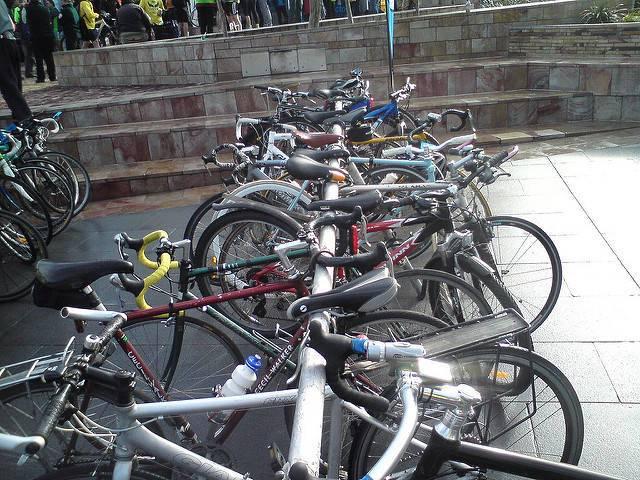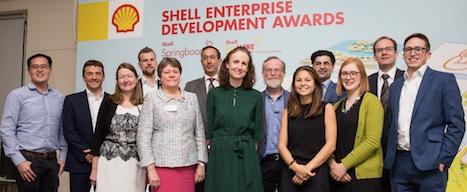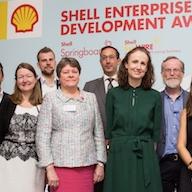Encouraging Healthy Habits in Employees


By Anna Johansson
There are many straightforward ways that businesses can become sustainable, but one of the best ways is to invest in employees. Employee health is a major cost for most companies, and as that cost keeps rising, more businesses are seeking more sustainable alternatives like employee wellness programs. According to one study, every dollar spent on employee wellness can lead to a six-dollar reduction in healthcare costs (including costs of health insurance and productivity lost due to illness). Fortunately, businesses don’t need to spend much money to see a substantial impact. Instead of investing in infrastructural changes, they can invest in changing the habits and lifestyles of their employees.
These are some of the most important habits to encourage in your workforce:
- Exercise. The power of physical exercise is hard to overstate; it improves both physical and mental health, and prevents a host of different medical conditions. Encouraging your employees to exercise more could involve company-sponsored gym memberships, exercise equipment at the office, or a corporate-sponsored fitness challenge, like those offered by Fitbit (both internally and with other companies). The rewards don’t have to be lucrative; even a casual-dress day for winners can be incentive enough to participate.
- Biking to work. Gas-powered vehicles are responsible for significant carbon emissions in this country, in large part because of our reliance on them for our daily commutes. If even a third of your workers start bicycling to work, rather than taking personal vehicles, you could instantly shrink your business’s carbon footprint (and help your employees stay healthier at the same time). New Belgium Brewing company incentivizes their employees this way, offering a free Fat Tire Cruiser bike as a reward for any employee on the job for more than a year (in celebration of the company’s Fat Tire Amber Ale).
- Influencing daily personal choices. It’s also important to help your employees engage in healthier daily practices, such as eating healthier foods and getting a full night’s sleep—which might have a higher impact on health than exercise. These habits will help them become happier and more productive, but will also reduce the amount of medical expenses they (and you) will face in the future. This cumulative cost production and productivity increase can help you invest in more large-scale sustainability efforts as well. Motley Fool, for example, offers free, open-access gyms, free spinning classes, and even subsidized, in-house, personal massages to improve employee wellness.
- Locally sourcing food. You can also promote more sustainable eating habits by stocking the break room with locally sourced food, and giving your employees more locally sourced options for their regular meals. Google has been stepping up its provision of healthier food and more vegetarian options in recent years. It’s long been known as one of the top companies for employee benefits, but recently, it’s reduced portion sizes of unhealthy snacks and made an effort to increase consumption of local vegetables.
The trick with these habits is, obviously, getting your staff to adopt them and stick with them. So how can you make that happen?
- Offer practical rewards. First, make it practically rewarding for your employees to participate in these measures. Free food is always a sure bet, and a reduction in health insurance costs could promote healthier lifestyle choices.
- Suggest resources. If you can’t offer helpful items or assistance immediately , you can direct your employees to further resources, such as farmer's markets for locally produced food, or bike shops to start biking to work.
- Set a good example. Finally, and perhaps most importantly, make sure you’re setting a good example as a leader. If you want your employees to start eating healthier, pack your own healthy lunches. If you want them to bike to work, lead the way. Encourage your supervisors and managers to keep this trend strong, visible, and consistent, and your employees will almost certainly follow suit.
It doesn’t take much to nudge your employees’ health choices in the right direction, and any change you make could have a substantial impact on your sustainability and your bottom line. Individual lifestyle changes, which only take a few minutes a day or minimal sacrifices to initiate, on a large enough scale, can result in a much cleaner, enjoyable environment and community. Make your business a leader in this area by proactively pushing for these habit changes, in addition to any large-scale efforts you’ve made to become more sustainable.
Image credit: Flickr / baudman
Anna Johansson is a freelance writer. You can follow her on Twitter @Number1AnnaJo.
'The Future of the Corporation' to be subject of British Academy research report


3p Weekend: Distilleries Get Wasted Diverting Food from Landfill


With a busy week behind you and the weekend within reach, there’s no shame in taking things a bit easy on Friday afternoon. With this in mind, every Friday TriplePundit will give you a fun, easy read on a topic you care about. So, take a break from those endless email threads, and spend five minutes catching up on the latest trends in sustainability and business.
There is nothing wrong with fermentation, unless, of course, we are talking about mass quantities of food. Non-profit groups such as the Natural Resources Defense Council (NRDC) have concluded up to 40 percent of all food in the U.S. ends up in the landfill before it has any chance at landing on a fork.
But fermentation at a very micro level can be a good thing for yogurt, kim-chi, pickles and of course, booze. The use of old and wanted food is nothing new; after all, the Egyptians and Ethiopians had supposedly been making beer from old bread and other foods piled around for thousands of years. Toast Ale is only one example of companies doing the same thing during the 21st century. The brewery makes its bread out of unsold bread, and in the meantime helps to chip away at the statistics suggesting one-third of all bread ends up being thrown out before it can be sold. Dogfish head Brewery and Mario Batali have also worked on making beer out of food waste.
Several distilleries in the U.S. and abroad are not only finding innovative ways to tackle food waste and boost waste diversion, but they are having a lot of fun, too, as they make some pretty respectable spirits - plus they are offering a new take on "getting wasted."
In Southern California, Misadventure Vodka is making its tipple out of unwanted starches. Old hot dog buns, muffins, bagels and donuts are among the baked goods that are prevented from going to landfill. Misadventure, located north of San Diego in the town of Vista, says it diverts 1,500 pounds of such foods a week. In an interview with a local newspaper, the company's founders say their ethos is modeled after the Danish architect Bjarke Ingels, who coined the term "hedonistic sustainability." Bottles of the vodka cost about $22.
“Now, people don’t have to sacrifice to be sustainable when it comes to choosing our beverage, and that is what makes us unique,” Misadventure co-founder Whit Rigali told The Coast News Group during an interview this summer. “That is one of the big surprises with our vodka — it doesn’t taste like every other vodka — it has a unique taste and flavor.”
Being located within an agricultural area also offers opportunities to make alcohol out of food waste. Ventura County has long been known as a leading strawberry producing region, but many of those berries are often lost between picking, packing and shipping. Others just will never be selected by consumers. "Ugly" strawberries are a tough sell for consumers. So, Ventura Spirits decided to buy those misshapen and unwanted berries instead.
The distiller salvages fruit and other produce that would otherwise be rotting in fields or landfills. The company distills a vodka out of strawberries; additional offerings include a spirit, Opuntia, made from the prickly pears that grow on Nopal cacti. Gin made from botanicals such as sage, in addition to a brandy that is also concocted out of strawberries, round out the company's product line. In a recent interview with NPR, the company claimed it had prevented 500,000 pounds of strawberries from local landfills over the past three years.
One company is turning food waste into something still used at bars: soap.
The scaleability of doing this at a nationwide and coordinated level is questionable, but give Bacardi credit for its outreach in Australia and New Zealand. The distillery has been working with 42Below Vodka to collect old lemons and fruit that once garnished and flavored cocktails. 42Below then collects the lemon rinds, cherry stems and other fruit rinds, churns them into a liquid lemon soap and distributes it to those same bars at no charge. Barcardi and 42Below have also launched a tongue-in-cheek video series that explains how this process works.
The beauty of making alcohol out of food waste is that it can actually lower costs. As noted in Food and Wine, Misadventure's products are priced competitively because preventing food from going to landfill actually is a boost for the company's bottom line.
Image credit: Ventura Spirits/Instagram
Danish Renewables Giant Dong Energy Rebrands, Ditches Oil and Gas Portfolio


The energy sector is slowly but surely undergoing a transformation, and a decision by Denmark’s Dong Energy sums up how this sector will look and operate during the 21st century.
The company, which at last count reaped $9.6 billion in annual revenues, announced that it had completely divested its holdings of any fossil fuels last week. Earlier this year, Dong said it had completely divested from any holdings linked to coal production.
And in shifting from “black to green” energy, Dong’s executives have called a special shareholders meeting at the end of the month as it seeks to rename itself as Ørsted.
The name change emanates from the Danish scientist Hans Christian Ørsted, who lived from 1777 to 1851. During his long career, Ørsted made several scientific discoveries, including electromagnetism in 1820; that finding in part laid the scientific foundation for how societies are powered today.
According to the company, the new name signifies its commitment to clean energy technologies, as well as the next generation of clean technologies such as battery storage. The new Ørsted company recently released a video that promotes the idea that renewables can be profitable and are an imperative to reduce any future climate change risks.
Dong has been involved with some of the world’s largest renewables projects in recent years. This spring, the company announced the German government awarded it three contracts to build offshore wind power farms in the North Sea. Dong’s portfolio also includes several high-profile wind projects across the United Kingdom. In 2013, the company partnered with Abu Dhabi’s Masdar to complete the London Array, which by many metrics is still the world’s largest operational offshore wind installation.
While wind power will still comprise the lion’s share of the company’s business, Dong/Ørsted also seeks to boost its investments in bioenergy and waste-to-energy technologies.
“We’ve undertaken significant efforts to find the right name and brand identity for our company,” said CEO Henrik Poulsen in a public statement. “Our new name recognizes H.C. Ørsted’s curiosity, dedication and interest in nature and our brand identity speaks to the innovation and profound understanding of nature, which is vital to creating a world that runs entirely on green energy.”
The fossil fuels divestment has also been underway elsewhere across Europe. Last year, oil-rich Norway announced its sovereign wealth fund would divest from coal. Ireland parliament voted earlier this year to become the first European nation to fully divest from carbon-intensive fuels such as coal and petroleum. And amongst the dozens of Catholic organizations that revealed earlier this week they would shed their fossil fuel investments, many of those groups are based in Europe.
Image credit: DONG Energy
Ben & Jerry's Leads on Migrant Dairy Worker Rights


For most of us, getting a bowl of ice cream from the freezer isn't a human rights issue.
We don't generally think of America's favorite summertime dessert as something that's fueled migrant worker talks for years or become the substance of moral debates in dairy-rich states like Vermont. But according to the nonprofit organization Migrant Justice, which has been lobbying for improved working conditions for Vermont dairy workers since 2014, migrant laborers deserve more protections.
And they just got them, thanks, in part, to Ben & Jerry's.
Earlier this week, the Vermont-based ice cream maker agreed to back an initiative to kick-start improved living and working conditions for migrant dairy workers.
Vermont has more than 1,200 migrant dairy laborers, many of whom are responsible for churning out the products for big-name companies like Cabot Cheese and Ben & Jerry's ice cream. And according to a 2014 report published by Migrant Justice, their common working conditions could easily make them the face of the national workers' rights campaign.
Many if not most are expected to work 60 to 80 hours a week, a schedule that often means they work without a day off.
Their working environment is secluded, and their pay has often been below minimum wage.
Workers "endure extreme isolation, often without a clear sense of where they are," and are often the subject of immigration patrols, since many of the workers are undocumented.
Ben & Jerry's agreement with Migrant Justice is meant to ensure that migrant workers can take part in many of the rights that you and I expect in our jobs: a minimum of eight hours rest between shifts, pay at or above minimum wage and basic housing expectations. According to Migrant Justice's research, 40 percent of migrant dairy workers have never been granted a day off from work. Ever.
“One of the biggest issues was housing conditions, the need for workers to be provided with basic amenities, like electricity, water, and housing that is free from pest infestations,” Enrique Balcazar told the New York Times. About 15 percent of migrant farm workers in Vermont don't have adequate heating in their company-supplied housing and 16 percent live in overcrowded, cramped community-style housing supplied by the employer that doesn't provide an adequate number of beds.
Ben & Jerry's agreement however, won't change these statistics automatically. The company still has to convince its dairy supply chain that upgrading living conditions for workers is to their benefit. To do that, it plans to pay a premium to farms that will meet the conditions spelled out in the Milk with Dignity agreement. What's really notable is part of that premium will go back to the worker in the form of added pay.
Under the agreement, workers are entitled to at least eight hours of rest between shifts. They'll be paid at least the state's minimum wage of $10 an hour and their housing will include clean running water, electricity and proper amenities like a bed to sleep in.
The enforcement will be monitored by workers and tracked by the Southern Poverty Law Center's Immigrant Justice Project, an organization that's been at the forefront of workers' rights in many other industries for years. The center's history pushing for civil and human rights goes back as far as the 1970s and has been partially responsible for improved working conditions for tomato workers, chicken processors and other laborers throughout the U.S.
But it's worth asking: What took so long?
And will worker-enforced changes really work? With so many pressures on the migrant worker community, many of which have already been documented in this effort, will individual workers really want to speak up when their landlord/employer doesn't stick to its side of the bargain or doesn't like being monitored?
Proponents of the Milk with Dignity campaign say yes. It's modeled after a successful FairFood model and builds worker education into the monitoring process. The most successful workers' rights campaigns were ones in which laborers not only participated but had an educated understanding of their rights and protections. It is also backed up by a new Milk with Dignity Standards Council that will have the power to dialogue with both sides and problem-solve challenges.
Of course, it's also worth wondering where the state of Vermont was during this process. Vermont's Agency of Agriculture already spells out the laws governing housing and working conditions online and sets standards for enforcement in Vermont's agricultural sectors.
The truth is, migrant worker rights often get left out of monitoring, in part because many workers are undocumented and although recognized as important in today's economy, remain a vulnerable population. In this day in age, that contentious status becomes an easy exit point for government agencies that can say that they can't protect workers that aren't technically on the state's resident roles.
Which is why Ben & Jerry's backing of basic rights for migrant workers is significant. It challenges farms to address the issue themselves, building an economic argument for supporting human rights. And, like so many previous initiatives, it puts migrant workers' rights on the list of protections that Vermont state agencies and dairy companies know they should have been addressing long ago.
Flickr images: Qfamily
Trump Administration Hides Inconvenient Corporate Tax Study


How much do we understand the oppressive impact of the country's corporate tax system on the average worker? It's a question that I would wager most of us don't go to bed pondering and likely isn't the common banter during lunchtime at Starbucks.
But Steve Mnuchin, the U.S. Treasury Secretary, apparently believes it's a topic that needs more consideration. According to Mnuchin, the current corporate tax rate is the bane of the average worker, because it unduly taxes the common man much more than it burdens those at the top of the corporate ladder. According to two recent presentations he's given, more than 70 to 80 percent of taxes paid by corporations actually are paid by hourly workers, not CEOs and company owners.
In an interview on Fox News, Mnuchin insisted that "most economists believe that over 70 percent of corporate taxes are paid for by the workers." He later followed that statement up with a presentation designed to promote the Trump administration and Congress' corporate tax reform. According to his second set of statistics, "over 80 percent of business taxes is born [sic] by the worker." And those are alarming figures, the Trump administration says, that need adjusting.
Of course, they are also a good sell if you are looking to convince voters that you've got the little guy in your sights and that retooling how much America's biggest tax payers (like -- ahem -- the president) pay as corporate taxes is going to put more money in the average laborer's pockets.
And, as Catherine Rampell, opinion writer for the Washington Post points out, there's other problems with the stats. They don't match.
Nor, Rampell points out, do the most informed economists on the topic believe those statistics. A white paper published in 2012 by the Treasury Department found that 18 percent of corporate tax is borne by workers. The other 82 percent was assumed by the corporate owners.
And Mnuchin knows that.
Which may be why (according to Rampell) the Trump administration recently updated the Treasury website. Apparently a link to the paper that explains the real corporate tax structure and where those taxes and who really assumes those taxes, has been removed from the Treasury website.
Her claim takes a bit of deep thought as well, since most administrations aren't likely to remove archival information from the public's view just so it can hide its intentions. For most administrations, simply saying "out with the old approach, in with the new" is enough.
But Rampell isn't alone. Presenting unsubstantiated data that suggests its the minimum wage worker or the migrant worker for that matter, that really enjoys the benefit of a 15 percent corporate tax drop has many analysts on alarmed. It suggests not just a rewriting of tax laws, but a rewriting of history.
This isn't the first time that the Trump administration has taken steps to downsize access to public information. The recent dismissal of the government's climate assessment committee and its delay in publishing a report that confirms the accuracy of climate science still has the administration on the hot seat.
As the Washington Post points out, it isn't really that data seems to keep on disappearing that should be a concern but the ramifications of unsupported claims. According to research published by the Urban-Brookings Tax Policy Center, by 2027, the country's highest income earners would see a windfall of benefits from the proposed changes. Middle-income earners on the other hand, would feel the impact of a next tax hike.
Which all goes to prove that grandiose claims that arrive without the hard data and public access are quite often, just that.
Flickr image:Reuben Ingber
Shell Springboard programme to award £350,000 to most innovative low-carbon enterprises


Target Commits to 100 Percent Sustainable Cotton by 2022


Add Target to the list of retail and apparel companies that say they will commit to a supply chain that will only source sustainable cotton. The Minnesota-based retailer announced yesterday that by 2020, it will only source cotton from sustainable sources for its national brands in apparel, home products and other goods. The company also posted an updated cotton sourcing policy on its web site.
Five years may sound like an eternity to environmental and human rights activists who have long railed against cotton's impact on people and the planet. But for a company with a complex supplier base such as Target, to accomplish this by 2022 is actually an ambitious time frame. "We have been actively working with and notifying our vendors about the policy to allow them enough time to prepare for upcoming sourcing changes and requirements. Our close collaboration with our vendors is critical to ensuring we are improving cotton growing conditions," explained Target spokesperson Jenna Reck in an email exchange with TriplePundit.
Target says it is still working on developing the framework by which it will determine what "sustainable" cotton actually means. Reck explained to 3p that the company has initially selected Better Cotton Initiative (BCI) and Organic and Cotton LEADS as their preferred cotton programs, as currently those programs best support Target's definition of sustainable cotton. For Target to lean toward BCI for one of its sustainable cotton frameworks is a coup for that organization: when 3p interviewed BCI for a story in early 2016, the organization noted at the time that they had little contact, and had made almost no headway, with Target representatives.
Lalit Toshniwal, a fabric engineer on Target's product design team, outlined four major challenges with which Target wanted to partner with cotton producers: the fiber's water footprint, the use of chemicals within cotton's supply chain, soil health and ethical working conditions.
Organizations such as Human Rights Watch have long been critical of cotton's affect on people, from forced labor in Uzbekistan to working conditions in apparel factories across Bangladesh.
The hurdle Target and its competitors face is that there is no global standard for evaluating and measuring what exactly sustainable cotton means. Some industry leaders on this front, such as VF Corporation's Timberland, have committed to a hybrid approach that considers U.S-grown, organic and BCI cotton. Other apparel companies, including Adidas, focus on BCI cotton and regularly update stakeholders on what percentage of cotton with their supply chain comes from such producers.
Target has not established a yearly goal in meeting its 2022 goal - nor would the company disclose what percentage of its products currently are made with sustainable cotton. "We will track and validate our progress over the next few years and report on it in our annual Corporate Social Responsibility report for guests and stakeholders to reference," said Reck.
With Target now aboard the sustainable cotton train, the pressure will be on more garment manufacturers, brands and retailers to shift toward more responsible sources of cotton. Many companies, according to a recent report, are still lagging when it comes to both sourcing and transparency. But more firms are acknowledging the fact that the footprint leaves on workers and the environment is one too large to ignore.
Gap Inc. announced earlier this year that its Gap-branded clothes will all be made from sustainable cotton by 2021. Wrangler, another VF brand, is also taking on the sustainable cotton challenge.
Executives should not merely look at these moves from a financial lens; after all, as more consumers want to know how and where their products are made, there are opportunities to build trust and strengthen brand reputation.
Image credit: Martin LaBar/Flickr
Expertise for SDG2: 3 Steps to Ending Hunger with Employee Talent


By Ava Kuhlen
Today’s leading companies are well aware of the Sustainable Development Goals and have started planning for how best to align their company’s sustainability strategy against these targets. But turning plans into action is challenging. And even more challenging is connecting individual employees to a company’s larger SDG strategy.
How can you harness employees’ passion, and talent, to make a difference against the SDGs?
Pro bono service, the contribution of one’s skills or expertise free of charge to social change organizations, is an out-of-the-box way to directly engage employees in your SDG strategy.
As part of Taproot’s commitment to ending hunger with expertise, we focus on SDG2: end hunger, achieve food security and improved nutrition, and promote sustainable agriculture.
Below we’ve outlined 3 steps your company can take to end hunger using employee expertise. This approach can help you:
- Make a sustained impact by pinpointing the talent that is unique to your company.
- Create solutions for your community by addressing the challenges of social change organizations.
- Offer employees tangible, action-oriented ways to contribute to your SDG strategy.
- Address hunger holistically with a new food systems approach to pro bono service.
Step 1: What do your employees do really well?
Contributing your expertise requires knowing your expertise. Sounds simple, right? But we aren’t talking about a broad-based view of the talent that exists across your company. To understand where your company’s human capital will make the most sustained and unique impact for hunger, you need to map your talent against the issue of hunger itself. It isn’t only agricultural companies who have expertise that matters to hunger. Talent in marketing, energy, logistics and transportation, and food disposal are all part of a holistic food systems approach. Knowing how your expertise connects to our food system as a whole is the first step in more effectively contributing your skills to ending hunger.
- What does this look like? Say you are a lifestyles company. The bulk of your expertise may fall into the marketing or consumption categories of the food value chain. This may mean you’re uniquely positioned to positively influence the decisions or behaviors of consumers around key hunger issues like obesity and healthy food choices.
Once you’ve identified where in the food value chain your company has core expertise, you need to understand how your talent will be most helpful. The purpose is to use your talent to strengthen the effectiveness of organizations already working to end hunger. Why is it important to engage these organizations at all? Because the SDGs will only succeed if they are both national and local in scale and implementation. This means engaging individuals and community organizations to take responsibility for the SDGs to ensure long-term results.
- What does this look like? Continuing with our lifestyles company example, you can start by researching the challenges of social change organizations working to end obesity. Addressing the needs of partners like the Center for Science in the Public Interest or the Alliance for a Healthier Generation can ultimately help create better research, advocacy and impact for consumer food choices and children’s health.
You’ve identified how your expertise maps against hunger and what organizations in that area truly need. The final step is to create a clear, well-defined scope of work that your employees can feasibly and successfully complete for the social change organization.
- What does this look like?
- Help a food pantry redesign and automate their volunteer intake process, creating a more pleasant volunteer experience and freeing up critically needed time for staff.
- Empower a food resource center to transform into a values-based business model creating an organization more equipped to serve the future needs of their community.
At the current rate of progress, the world is not expected to reach the zero hunger target by 2030. We need to rethink all of our resources for tackling this issue, including our expertise.
Interested in contributing your expertise to end hunger? Contact Taproot to learn more.
Image credit: Flickr / Didriks
Ava Kuhlen is a proven influencer and relationship builder for key players in the social sector. She has more than 10 years of experience aligning networks of people and resources for social impact and specializes in nonprofits, philanthropic advising, and corporate social responsibility. As Director of External Relations, she harnesses Taproot’s expertise and knowledge to grow and advance the field of pro bono service. She’s written on topics around strategic planning, diversity and inclusion, product donations, technology pro bono, and leadership and development.
6 Ways to Loosen Up and Land the Job


By Shannon Houde
You did it! Your killer CV, brilliant phone interview, and smart bio have gotten you to the final interview. You know the company, you know the job, you can do the job and even love it. Now you have one more chance to “wow.” Stay calm, cool, and collected to land your dream job with these 6 prep tips:
Breathe
I am a meditator who finds grounding in daily (well, almost daily) spiritual practice. You too have probably heard about the benefits of meditation and mindfulness. The good news is, it doesn’t have to be a big production with floor pillows and incense. You can do it anytime! Just try a quick and simple breathing exercise or check out the Calm app to help relax. Do this for 5 minutes just before the interview. Take that time!
Exercise
I am a skier, cyclist, swimmer, a yogi of 20 years – trying to keep my endorphins up and my life in balance. So I can attest to the advantages of exercise before an interview, presentation, or just any average day! Try waking up and hitting the gym, taking a yoga class or going on a walk around the neighborhood to get a burst of energy and clear your head. Getting that blood pumping and fresh air in your lungs will greatly affect your performance.
Smile like you mean it
Smile more! It is proven to be good for your brain and wellbeing. Don’t believe me? Check this list of 15 health benefits of smiling. Smiling is one of those small things you can do for yourself and others to give back and to improve your life, for free, any moment of any day. But don’t fake it. People can tell. Make sure it is genuine and that you don’t look over-eager.
Practice
The more you practice answering interview questions aloud, the more confident you’ll be when it’s real. Start with these questions and practice in front of a mirror (or with me!). You can record them on your phone and play it back to yourself. Scary, yes I know! But worth it as you will see those little ticks you need to iron out before the big day.
Be curious
Ask thoughtful questions. And listen well. This will help you discover common ground with our interviewer and leave a lasting impression. But make sure you don’t ask questions that sound like you are interviewing THEM. This is your chance to sell yourself not do your due diligence on them. Once you are in the final round and have an offer you can ask some of the (less contentious) culture questions. Or better yet, ask a few ex-employees the real story of what it was like working there.
Map your career journey
Interviews are an opportunity to show off your interpersonal communication skills, so a key part of your preparation should be a coherent and descriptive response to that classic interview question: “Walk me through your CV.” Take a creative approach and bring in a colorful, one-page Powerpoint slide that shows in simple bullet points how each step (4-5 steps) you’ve taken in your career led you to the next, and ultimately brought you to the job you’re interviewing for. Call it “My Career Journey.” Doing this will force you to build a strong career narrative and help you side step around the less relevant areas that lose your audience. Plus give you an extra confidence boost!
Let me know how these tips work for you and get more bespoke advice about mapping your career journey and landing you dream job with my course.
Break a leg!
Shannon Houde is an ICF certified executive and career coach who founded Walk of Life Consulting, the first international professional development advisory business focused solely on the social impact, environmental and sustainable business fields.
Image Credit: Bethany Legg via Unsplash